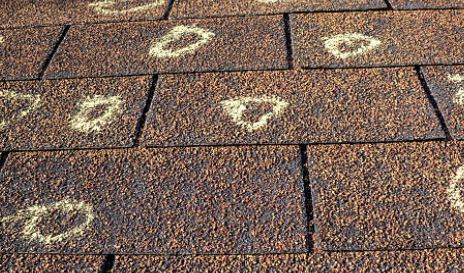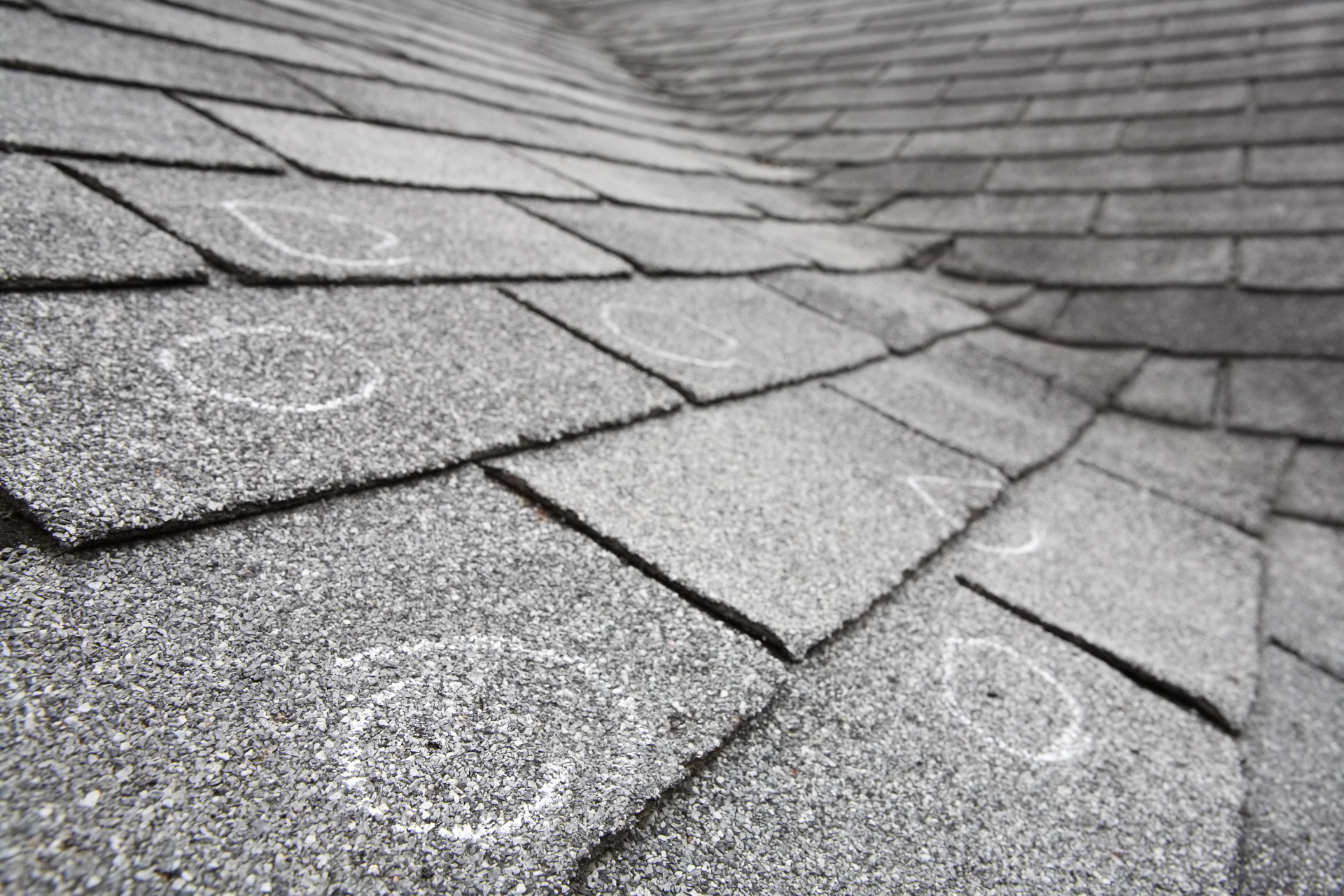
Areas that are prone to hail, like our Denver Metro area, are often populated with people who understand that hail can damage a roof. Most residents in the area have been through multiple claims and are confident that they "know the routine". But what does hail really do? Does your roof really need to be replaced?
The answer is often not as clear as you may think.
What is hail damage?
First of all, hail comes in all sizes and shapes. The velocity is also a factor in the amount hail can damage when it is wind driven.
HAAG engineering, defines damage as a bruise or penetration in the matting of the shingle. It often includes the granules being displaced and the bitumen matting being exposed.
For many insurance companies, HAAG's definition of hail is the only opinion that matters. They often say that hail that is less than one inch in diameter will not damage a shingle.
Different asphalt shingle companies such as Owens Corning, GAF, Certainteed, Atlas, IKO, and Tamko have their opinions of what is considered hail damage.
Sure a bruise, or a puncture is hail damage, but most of these manufacturing companies take it further. The opinion of many roofers and manufacturing companies is that the shingle's life expectancy has been greatly reduced when granules have been displaced from the shingle. This exposes the asphalt to radiation, and weathering.
Should you inspect your own roof?
The short answer: No
Solution: Call a Professional!
Homeowners often look at their own roofs to decide if they have hail damage (not a good idea). We've had multiple homeowners tell me that they have seen hail damage, when it is really just blistering. Blistering happens usually from lack of ventilation. The asphalt bubbles and burst.
Severe blistering may look like hail damage to an untrained eye, but it's usually easy for a seasoned professional to identify. We have also seen many homeowners that say that their roof is fine, only to discover that hail has completely ruined the roof when one of our team of professionals gets on the roof and inspects.

First we start by looking at the soft metals on the roof. Generally turtle vents, furnace vents, and flashing will visibly show dents from hail. These dents also give us a clue as to how large the hail was.
We also have a unique weather tracking software that provides us exact dates and data for when storm hits a certain address, the size of the hail, and other factors such as wind. Then, we compare the data to what we find directly on your roof and can tell when the "date of loss" was.
Once we see that there are signs of hail, we move on to the shingles. Most insurance adjusters do a "test square", which is a ten by ten foot area (100 square feet). They outline this area with chalk and look for “bruising” or hail marks.
Different companies have different criteria as to how many "hits per square" they need to find in order to replace that slope. Some companies need 6 and some need as many as 12 hits per square.
Hail damage at times can be very easy to see and other times it takes a while to find. Black shingles, for example, mask hail damage and markings very well. The black tar exposed is the same color as the granules, and it takes a roofing professional to find these markings effectively.
Leave your roof inspections to a professional
When it comes to your roof and property management, we suggest you call a Denver CO roofing contractor with long-term experience and trusted by locals. It's worth your time to protect the value of your investment. Your roof is one of the most expensive pieces of your home and it should be treated that way. Call Roper Roofing today if you think you may have hail damage and we will have a seasoned professional on our team come out and inspect for you!